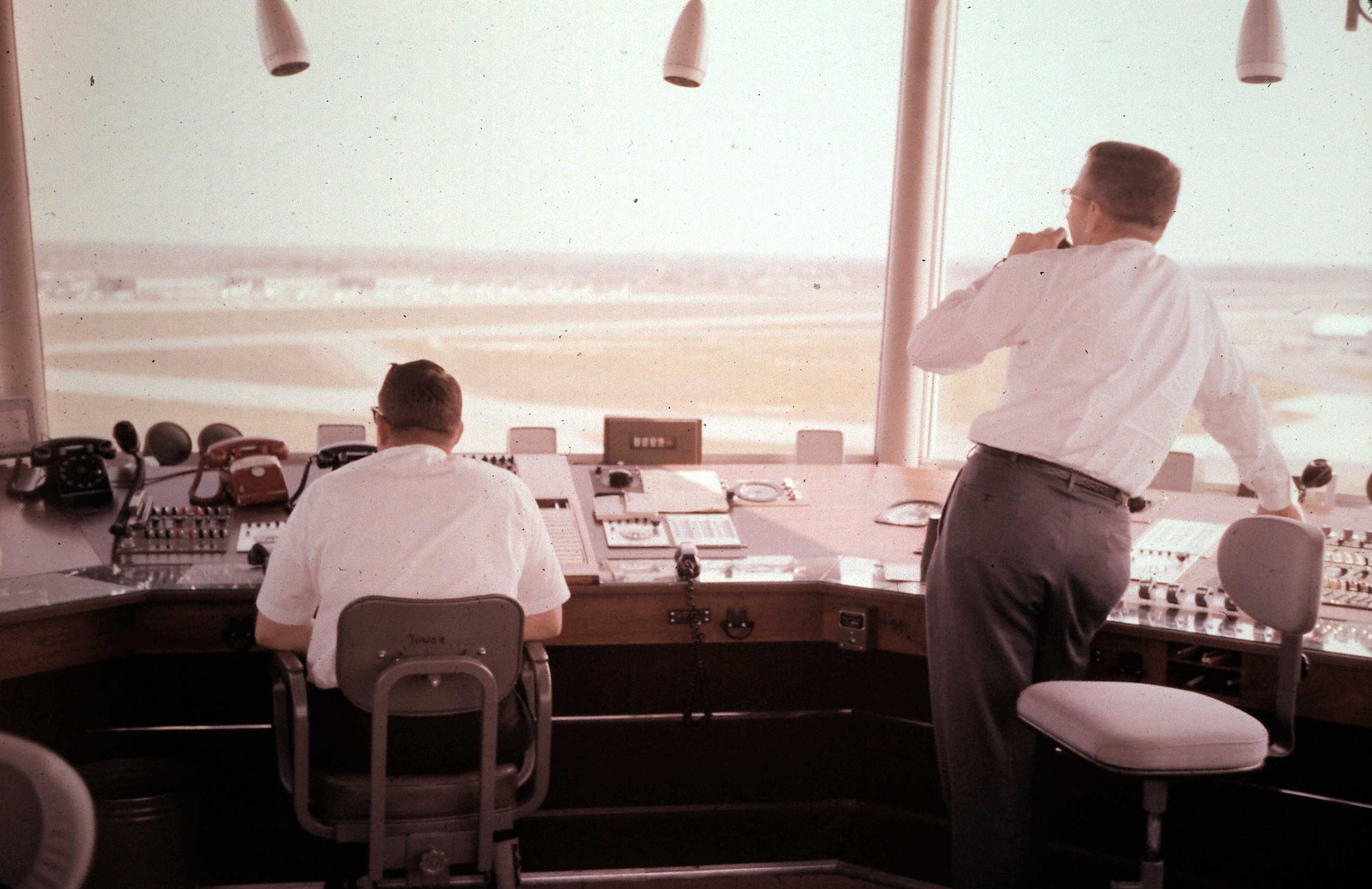Amidst storms on Monday, the Federal Aviation Administration (FAA) furloughs of air traffic controllers took effect. Travelers at Los Angeles, Charlotte, and Washington, DC airports reportedly faced delays caused not by weather but by “staffing” problems, which, in other words, meant there too few eyes on traffic in the sky. While the sequestration process and its tragic outcomes have received a nauseating plethora of coverage from almost every media outlet, the flight delays that are spreading deserve, I think, some serious attention. One needs only to glance at the origins of FAA to discern how absurd it is for our government to cut FAA’s employees’ work hours by 10 percent, in effect creating the very issues that FAA was designed to remedy.
Before FAA became a federal administration, it was the independent Civil Aeronautics Authority (CAA), established by the Civil Aeronautics Act of 1938. The act not only gave CAA the authority to conduct accident investigations and evaluate accident prevention methods but also the power to regulate an emerging aviation industry and determine its routes. As the US entered WWII, CAA extended its air traffic control system to include the actual operation of air traffic control towers. Despite these towers having become ubiquitous around the country, in June of 1956 two planes collided over the Grand Canyon, killing all 128 people on both flights. In response, Eisenhower signed into law the Federal Aviation Act of 1958, citing how “recent mid-air collisions of aircraft, occasioning tragic losses of human life, have emphasized the need for a system of air traffic management which will prevent, within the limits of human ingenuity, a recurrence of such accidents.” The responsibilities of CAA were transferred to a new Federal Aviation Agency, which in 1967 was renamed an Administration when it became a part of the new Department of Transportation. In essence, FAA was intended, since its inception, to implement air traffic control methods that could potentially be compromised with sequestration.
Concerns have been raised about FAA completely canceling federal contracts with some small airports, removing all air traffic controllers from towers. While some airports function well without air traffic controllers, pilots prefer, especially when larger airplanes come through the runways, to have an actual person overseeing air traffic. “There’s lots of airports around America that do not have an air traffic control tower,” Yvette Aehle, director of Southwest Georgia Regional Airport, told NPR, “However, we’ve always had one…to go back to being an uncontrolled airport is not something that we…want to do…the closest metaphor that I can explain to people is it’s like having a stoplight, and then going to a flashing red light… other airports do have uncontrolled fields, but it’s just not something that pilots like. Obviously, when you’re mixing the kind of airplanes that we’re mixing and they’re having to look out for each other, listen to what other pilots are doing, you know, it could lead to a mistake.”
FAA Administrator Michael Huerta’s testimony before the Senate Committee on Commerce, Science and Transportation on “FAA’s Progress on Key Safety Initiatives” addressed many, but not all, air traffic concerns with sequestration. Huerta emphasized that “as we undergo the difficult process of implementing the deep cuts required by the sequester, we refuse to sacrifice safety–even if this means less efficient operations.” While not compromised in safety, less busy airports like Southwest Georgia Regional will lose FAA air traffic controllers whose positions are fundamental to FAA’s origins. Indeed, FAA is not, in Aehle’s words, “completing their core mission.”
Worse than delays many travelers will encounter, however, are cuts in pay for FAA workers. The story of the aviation industry’s treatment of its employees (see Justice Stephen Breyer’s reflection on his involvement with deregulating the industry in the 1970s with Ted Kennedy) will, unfortunately, have another sad chapter as the sequester continues to takes effect. But not all are going quietly: a lawsuit is pending against FAA, brought on Airlines for America, the Air Line Pilots Association, and the Regional Airline Association. If successful, the US Court of Appeals for the DC Circuit would order the FAA to “vacate” the furloughs, in turn saving the jobs of air traffic controllers and allowing the FAA to do what it was always meant to do.

http://news.yahoo.com/white-house-calls-effort-end-airport-delays-good-140534158.html
Luckily for this interest group, Congress was going to have to use airports soon so they made sure to reinvest our tax money in the FAA. Problem solved.
As to the sequester as a whole, I think there’s definitely some truth in the idea that not all of these cuts had to be put in place, and perhaps they are being done for political effect. As of a month ago, almost 3,000 jobs were opened up in the federal govt in the face of these ‘draconian’ cuts (http://news.investors.com/ibd-editorials/031213-647740-2600-federal-job-opened-since-sequestration.htm?p=full). The sequester also is not a ‘cut’ in the sense that it will lead to a decrease in spending. http://blog.heritage.org/2013/02/24/chart-of-the-week-sequestration-cuts-2-4-percent-out-of-total-spending/ It’s a mild decrease in the increase of spending. Surely if we truly care about necessary services like the FAA and whatever thousands of programs that are supposed to disappear now that tens of billions of dollars have been cut out of yearly spending in the trillion dollar range, we could find it. Maybe take it out of the military (like, actually, most of these cuts are in), or bloated large-scale entitlement budgets, or those 3,000 new jobs we just opened.
Either way, I do believe this is an important read as well:
http://reason.com/blog/2013/02/25/if-you-think-the-sequester-cuts-will-tan
And this is an interesting piece on how privatization might’ve helped the situation too, to leave critical things like air traffic control out of the whims of politics and into the hands of more effective, efficient private entities…
http://www.washingtonpost.com/opinions/air-traffi…
Great piece Dan. I wonder if the legacy of the Reagan standoff with Air Traffic Controllers effects how Congress views the FAA in light of the sequester?